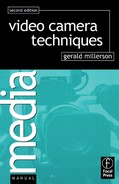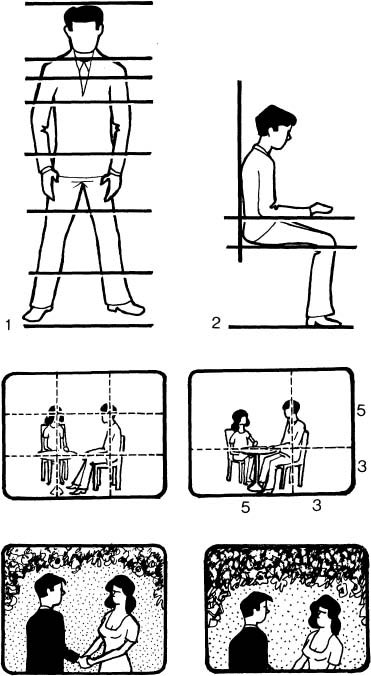When you are setting up any shot, always ask yourself:
• What is just outside the frame? It may be important – or about to intrude.
• How do the subjects interact with the frame in this shot?
Although at first sight the most logical thing to do, is to place your main subject in the center of the screen, that is not always the most effective way of presenting it. In practice, the center of the screen has been found to be the weakest concentrational area. The eye tends to move away from it towards other parts of the shot, unless there are;
• strong compositional lines concentrating on it,
• or eye-catching movement, color or form.
Most subjects look best when off-centered to some extent, balanced against other tonal masses in the picture.
A centrally-framed subject can look too deliberately balanced, formal, even dull. If someone is speaking directly to the camera, the picture will often look much more attractive if their body is slightly angled – e.g. facing a three-quarter frontal position, with the framing offset a little to compensate. The amount of this offset or ‘looking-room’ should generally be increased with the subject’s angle, as they turn towards a profile.
Except for special effects, it is best to avoid splitting the screen into equal, evenly balanced sections. The result is far too mechanical. To avoid this, many camera operators regularly use a routine called the rule of thirds. Here you divide the screen into thirds vertically and horizontally, and put subjects on these lines, or wherever they cross. Although better than using a bisected frame, this too can become a very predictable device.
In general, you will get much more satisfying proportions if you use either 2:3 (fifths) or 3:5 (eighths) ratios, for these approximate more closely to the Golden Section so widely applied in the graphic arts.
If you are not careful, people can look as if they are sitting, leaning or standing on the border of the picture. So look out for this situation. It can be distracting – even ridiculous. Check too, that the frame does not cut the body and limbs at natural joins (neck, knees, elbows), for this too draws attention to itself. Instead, arrange for the frame to cut at the intermediate points you see in the diagram opposite.
Framing faults
Avoid (1) letting the frame cut people at natural joints. Choose intermediate places, as shown here. Avoid them touching the screen edges (2).
Proportions
Dividing the screen into thirds produces standard, uninteresting proportions. Ratios of 3:5 or 2:3 give a more pleasing balance.
Ambiguous framing
If too prominent, a nearby subject may appear important. Is there someone hiding in the tree?

